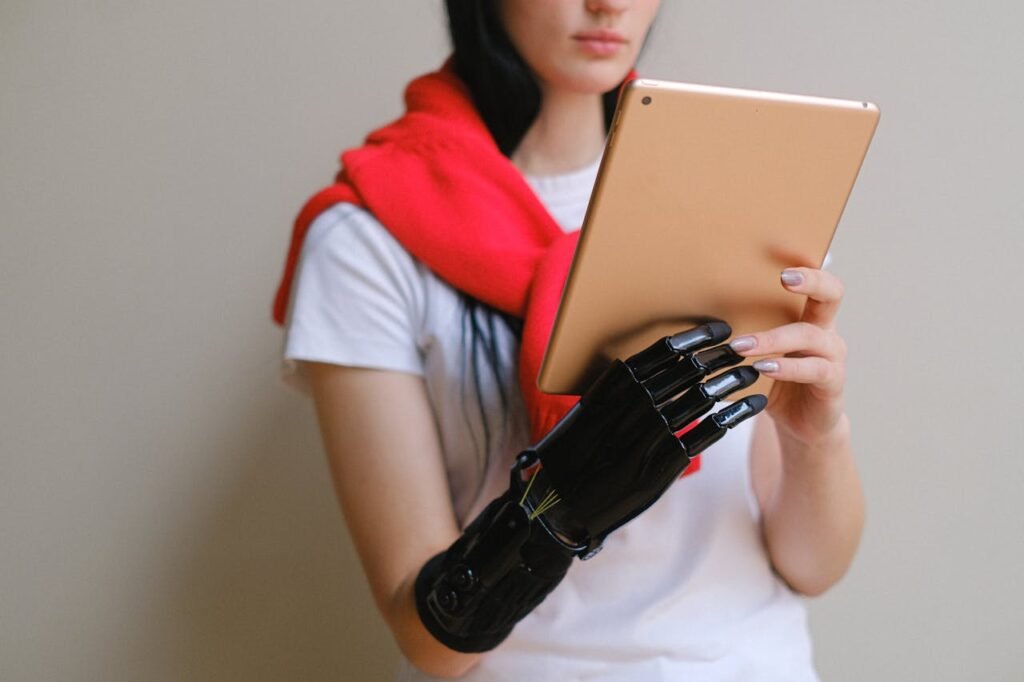A trial fit is a turning point in your prosthetic journey. It is the moment when the device leaves the drawing board and meets your body. It is not just about whether the hand, arm, or socket fits—it is about how it feels, how it responds, and how it can be improved to become a natural part of your daily life.
At RoboBionics, we see the trial fit as a partnership. We do not expect you to simply accept the prosthetic as it is. Instead, we listen to what you feel, observe how you move, and decide the next steps with you. The trial fit is where we collect signals, emotions, and feedback that shape the final outcome. It is where we test, adjust, and fine-tune until the prosthetic truly supports your independence.
This article takes you deep inside that process. We will walk together through what happens during a trial fit, how outcomes are measured, and how we make decisions together about adjustments, training, and long-term comfort. Each section will show you what to expect, what to notice, and what to ask for, so you feel fully prepared and confident.
Understanding the Purpose of a Trial Fit
Why the Trial Fit Matters

A trial fit is not the end of the journey, but a checkpoint. It helps both you and the prosthetist see how the device interacts with your body in real conditions. This stage is about learning, not perfection.
What We Look For
During a trial fit, we pay attention to comfort, function, and natural movement. It is a chance to notice small issues before they grow. Each observation guides us toward a better final fit.
How You Play a Role
Your voice matters most in this stage. The trial fit is not a test of you—it is a test of the prosthetic. When you share your experience, you give us the clues we need to make the prosthetic truly yours.
First Impressions During the Trial
Listening to Your Body
Your body gives instant signals. If you feel pinching, heaviness, or fatigue within minutes, that is a sign to adjust. These early feelings are important, because they often predict long-term comfort.
The Fit on Your Skin
The socket should hold your limb securely but never painfully. Red marks, sliding, or looseness are early warnings. Even the smallest discomfort now can become a serious problem later if left unspoken.
Movement and Ease
Simple actions like reaching, gripping, or turning should feel smooth. If you struggle with basic motions during a short trial, they will be harder during daily use. That is why we encourage you to test freely.
Performance Outcomes We Measure
Reaction to Signals
When you send a signal through your muscles, the prosthetic should respond without delay. A lag or mixed response can be fixed, but it must be noticed now. Smooth response means confidence later.
Grip and Hold
A strong, steady grip is essential. If the hand drops objects or squeezes too tightly, it affects daily trust. The trial fit is the perfect place to fine-tune grip strength.
Range of Motion
Flexibility matters. You should be able to carry out different types of movements, from wide openings to small, precise actions. A limited range will restrict independence, so we always test across many motions.
Comfort as a Deciding Factor
The Role of Weight
The prosthetic should feel like a natural extension, not a burden. If it feels heavy, it may cause fatigue or strain. Weight balance is one of the key adjustments made after a trial fit.
Skin Response
Any irritation, redness, or unusual heat should never be ignored. The skin tells us when the socket is too tight, rough, or poorly aligned. We watch closely for these signs during your first wear.
Adjustability of Straps and Liners
Straps and liners should feel supportive but gentle. If you keep adjusting them or if they slip often, we take it as feedback for design improvement. Stability is vital for long-term use.
Communication During the Trial
Asking and Answering Questions
We encourage you to ask every question that comes to mind. How does it work? Can it be lighter? What happens if it breaks? Clear answers build trust and give you clarity.
Reading Your Reactions
We also learn from your expressions and pauses. If you hesitate to use the prosthetic or show doubt, we explore the reason together. Silence can hide important feedback, so we always ask.
Deciding Together
The trial fit is not a one-way process. Each outcome—comfort, movement, response—is discussed with you. We decide the next steps as partners, not as a provider and user.
Real-Life Task Testing
Everyday Actions
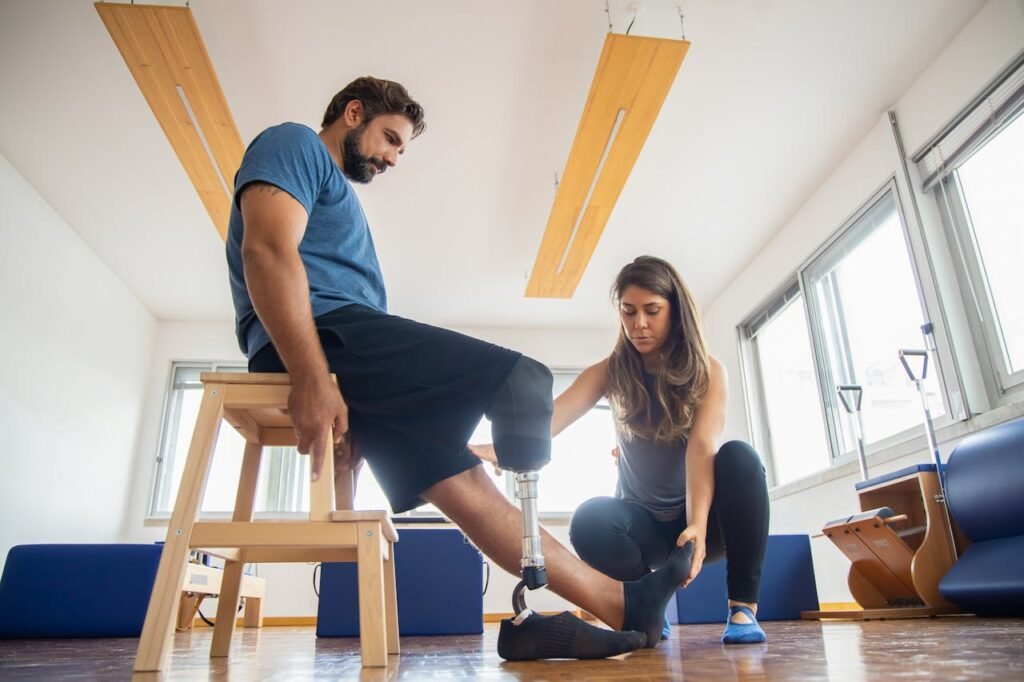
We bring simple objects into the trial—cups, pens, bottles, or keys. This helps us see how the prosthetic performs in real tasks. If you struggle, we know adjustments are needed.
Fine Control
Holding small objects like coins or pressing buttons shows us how precise the hand is. Fine control is as important as strength, and we carefully note where it feels lacking.
Confidence in Use
If you can perform tasks without fear of dropping or breaking something, that is a positive sign. If you hesitate, we explore what causes that hesitation and adjust accordingly.
Emotional Outcomes of a Trial Fit
The First Emotional Reaction
When you wear a prosthetic for the first time, the feeling is often overwhelming. Some people feel joy, others feel nervous, and a few feel uncertain. These emotions are natural. They give us insight into how ready you feel to accept the device as part of your body.
Building Trust in the Device
Trust does not come in the first five minutes. It grows as you see that the prosthetic follows your command. If the hand grips without slipping, if it responds quickly, and if it supports you in small tasks, you begin to relax. That relaxation is the start of trust.
Confidence Versus Hesitation
During the trial, we notice how confidently you use the prosthetic. Do you reach for objects freely, or do you move slowly as if afraid something might go wrong? This confidence—or hesitation—tells us how much more training or adjustment is needed before you feel at ease.
Technical Outcomes We Observe
Signal Strength and Consistency
Every prosthetic that works on muscle signals depends on steady input from your body. If signals are too weak or inconsistent, the device may struggle to respond. We carefully measure how well the sensors pick up your intent. If the device misreads your command, it can be recalibrated or repositioned.
Device Responsiveness
We test how quickly the prosthetic reacts after you think of an action. Even a small delay can cause frustration in real life. During the trial, we fine-tune settings until the hand feels like it is moving with you, not after you.
Durability During Use
A prosthetic should feel reliable, not fragile. If the hand makes unusual noises, vibrates too much, or feels unstable, we see it as a warning. Long-term strength is just as important as comfort, so this outcome matters a lot.
The Importance of Skin Comfort
Why Skin Feedback Matters
Your skin is sensitive. It reacts quickly to pressure, friction, and heat. If a prosthetic leaves red marks after just a few minutes, that tells us the socket is not shaped correctly.
Observing Pressure Points
We watch carefully for signs of pressure. Sometimes the discomfort is mild in the beginning but becomes painful with longer use. We take every sign seriously, because ignoring it could lead to skin damage later.
Adjustments for Better Skin Health
If there are issues, we change liners, add padding, or reshape the socket. The goal is to create a fit that feels secure but gentle. A well-designed prosthetic should almost disappear into your daily life without constant irritation.
Performance in Daily-Life Scenarios
Holding and Releasing Objects
One of the most practical outcomes is how the prosthetic handles real items. We ask you to hold a cup, pick up a pen, or carry a small bag. If the hand drops items or grips too strongly, adjustments are needed.
Fine Tasks That Test Precision
Turning a key, buttoning a shirt, or using a phone are tests of fine motor control. These tasks show whether the prosthetic can give you the independence you need. Any struggle here is noted and addressed.
Endurance and Energy
Even if the prosthetic works well at first, it should not tire you quickly. If your arm feels heavy after ten minutes, it means the weight balance is not right. We want you to use the device all day, not just for a few minutes.
Communication as an Outcome
Listening to Your Concerns
One of the clearest signs of a successful trial is how openly you can share your concerns. If you feel heard, you will be more willing to use the device and work with us on adjustments.
Our Role in Explaining
We also make sure every technical detail is explained in simple words. You should never leave a trial confused about why something works or does not. Clear communication is an outcome we always measure.
Agreement on Next Steps
At the end of every trial, both you and the prosthetist should agree on what comes next. This might be a refit, recalibration, or moving to final fitting. That shared understanding is the real success of a trial.
Emotional Safety During the Trial
Creating a Supportive Space
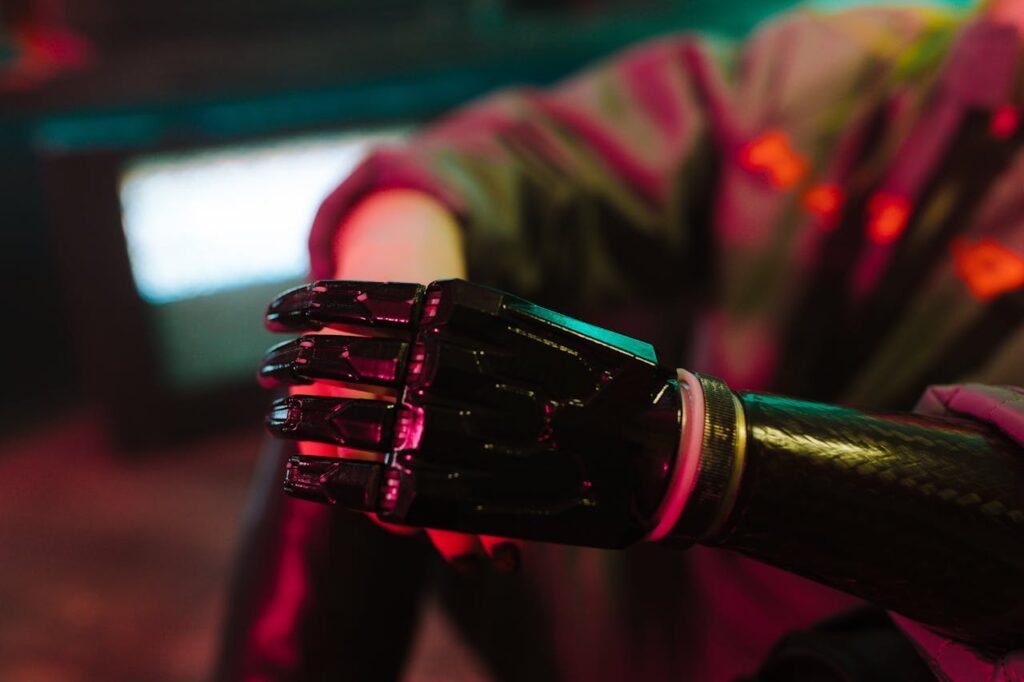
We know the trial can feel stressful. That is why we create an environment where you can speak freely without judgment. Feeling safe to share your doubts is as important as the device itself.
Respecting Your Pace
Not everyone adapts at the same speed. Some people want to try many tasks right away, while others prefer to take it slow. We respect your pace and adjust the session to your comfort.
Encouragement Along the Way
Every small success is worth celebrating. Whether it is holding a spoon or pressing a button, these wins build your confidence. We remind you of your progress, because encouragement keeps the journey positive.
Deciding on Adjustments
Identifying What Must Change
Once the trial ends, we review together what worked and what did not. If you had pain, if the grip was uneven, or if the response was slow, those become our priorities for adjustment.
Timing of Adjustments
Some adjustments can be done right away, like recalibrating sensors or adjusting straps. Others, such as reshaping the socket, may take longer. We explain the timeline clearly so you know what to expect.
Your Choice in Every Step
Most importantly, no change is made without your agreement. You have the final say. After all, it is your body, your comfort, and your life that the prosthetic is meant to support.
Real Examples of Trial Fit Outcomes
When the Fit Was Too Loose
During one trial, a young man named Kiran noticed his prosthetic hand slipping as he tried to lift a small bag. At first, he thought it was his fault. But the truth was that the socket was not snug enough. Instead of pushing him to “get used to it,” we reshaped the socket to match his arm better. The next time he tried, the bag stayed secure, and his confidence rose instantly.
When the Grip Was Too Strong
Another user, Fatima, wanted to test her prosthetic by holding a piece of chalk in her classroom. Each time she pressed, the chalk snapped. This showed us that the grip strength was not balanced for delicate objects. By recalibrating the sensors, we adjusted the pressure to respond more naturally. In her next trial, she could finally write on the board without breaking anything.
When the Device Felt Heavy
Arvind, a shopkeeper, tried his trial prosthetic and felt fine at first. But after fifteen minutes, he began to feel tired in his shoulder. The weight distribution was wrong. We adjusted the design by shifting balance points and reducing unnecessary load. On his second trial, he could use the device for much longer without fatigue.
Step-by-Step Adjustment Process
Step One: Collecting Feedback
We start by asking how you felt at every stage of the trial. Was there pain? Did you trust the grip? Did the response match your intent? Each detail you share guides us toward what must change.
Step Two: Technical Testing
We then run checks on the device itself. Sensors, battery, grip strength, and alignment are measured carefully. Sometimes the issue lies in calibration, not comfort. We separate technical problems from fitting problems.
Step Three: Making Changes
Depending on what we find, we either adjust on the spot or plan a follow-up. For example, sensor sensitivity can be tuned instantly, while a new socket shape may take a few days. Every change is explained in plain words so you know what is happening.
Step Four: Retesting Together
Once changes are made, we repeat the same tasks. If you dropped a bottle the first time, we give you the same bottle again. This retesting shows whether the adjustment has solved the issue.
Step Five: Agreeing on the Outcome
At the end, both you and the prosthetist must agree on the result. If you still feel discomfort, we continue refining. The process only moves forward when you feel ready and satisfied.
Training as a Key Next Step
Learning to Control Signals
Even with a perfectly fitted prosthetic, using it well takes practice. We guide you through exercises that strengthen your ability to send clear muscle signals. With time, the hand begins to respond more naturally.
Building Everyday Skills
We focus on activities that matter to you. If you are a student, we practice writing. If you are a parent, we practice lifting small objects safely. The goal is not just to use the prosthetic, but to use it in the life you live.
Confidence Through Repetition
Every practice session builds confidence. The more you use the prosthetic in guided settings, the more natural it feels outside the clinic. By the time you take it home, you know how to trust it.
Emotional Growth After the Trial
Turning Doubt Into Trust
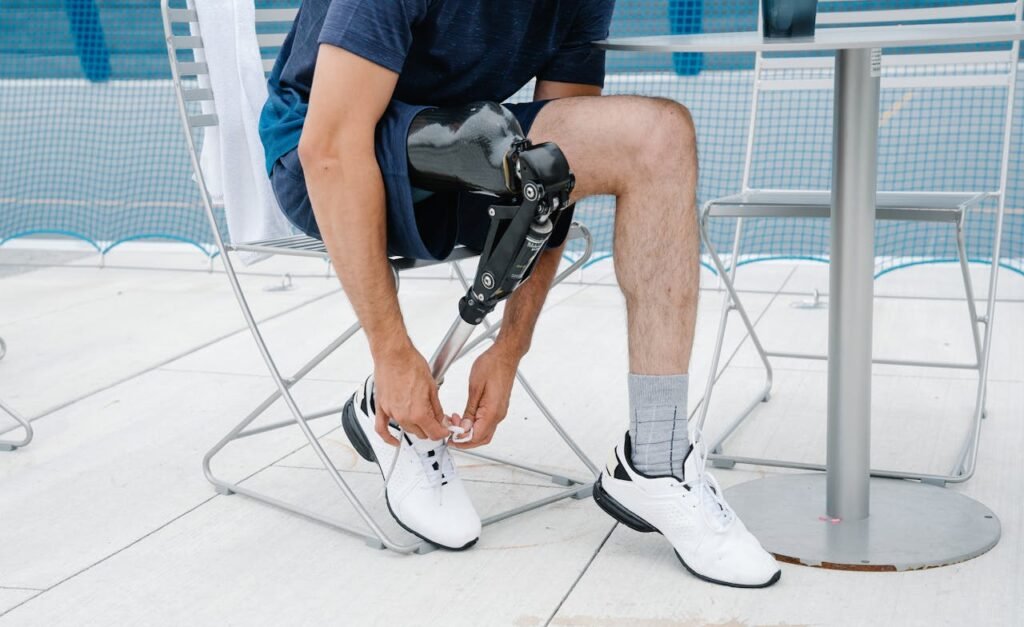
Most users begin with hesitation. They worry about breaking the device or failing in front of others. After a successful trial and a few adjustments, those doubts fade. Each small win builds trust in the prosthetic and in themselves.
Finding Independence Again
One of the most powerful outcomes is the return of independence. Simple tasks—tying shoelaces, drinking from a cup, unlocking a door—become possible again. This independence is the true goal of every trial.
Feeling Supported
The journey is not just about technology but about care. Knowing that adjustments are possible and that someone is listening gives users the emotional strength to move forward.
Long-Term Planning After a Trial Fit
Scheduling Future Adjustments
Your body may change with time. Muscles may grow stronger, or skin may adapt differently. That is why we plan regular check-ups to keep the prosthetic aligned with your needs.
Preparing for Maintenance
Like any advanced device, a prosthetic requires care. We guide you on simple maintenance and schedule servicing for the long run. Knowing this in advance prevents sudden problems later.
Ensuring Ongoing Training
We also plan continued training sessions. These sessions help you learn new skills, refine control, and adapt the prosthetic to new challenges in life. Growth does not stop after the trial—it continues.
Advanced Outcomes We Consider
Muscle Signal Adaptation
Some people discover during a trial that their muscle signals are not strong enough for the prosthetic to pick up clearly. This is common after an amputation because muscles may weaken with time. Instead of seeing it as failure, we view it as a chance to build strength. With targeted exercises or our electronic muscle stimulator (like the BrawnBand), signals become sharper, and the prosthetic responds more reliably.
Real-Life Stress Tests
Beyond simple tasks, we sometimes ask you to perform actions that mirror your lifestyle. For a chef, that might be chopping or holding utensils. For an office worker, typing and writing. For a parent, lifting a toy or bottle. These stress tests give us a truer picture of how the prosthetic will behave in your daily life.
Emotional Alignment with the Device
Technology alone does not decide success. Your acceptance of the prosthetic is equally important. Some users connect quickly and feel “at home” with the device. Others need time, reassurance, and adjustments. Both outcomes are valid. What matters is that we identify where you are and walk forward together.
Dialogues You Can Use During a Trial
When You Feel Discomfort
“This spot feels tight after a few minutes. Can we adjust it?”
“My skin is red here—should we try a different liner?”
When the Prosthetic Does Not Respond Well
“I wanted the hand to open, but it closed instead. Can we recalibrate the signals?”
“There’s a delay when I try to grip something—can we fine-tune that?”
When You Need Reassurance
“Is this level of grip safe for fragile objects like glass?”
“How long can I expect the battery to last if I use it all day?”
When You Want More Practice
“Can I try the same task again after the adjustment?”
“I’d like to try lifting something heavier. Is that okay?”
Turning Outcomes Into Next Steps
Refining the Fit
If the socket feels uncomfortable, the immediate step is reshaping or adding padding. We never move forward until you feel secure. This ensures your prosthetic becomes a natural extension, not a burden.
Adjusting Technical Settings
Grip strength, response speed, and signal sensitivity can all be tuned. These adjustments are often quick but make a big difference in daily life. The outcome is a smoother, more natural flow of movement.
Expanding Training Goals
If you succeed in basic tasks, the next step is preparing for more complex ones. Each outcome is a milestone, and each milestone builds the roadmap to independence.
Emotional Milestones After a Trial
The Shift From Doubt to Belief
Many users start with fear—fear of failure, fear of breaking the device, fear of not adapting. After a few successful tasks, that fear changes into belief. You begin to see the prosthetic not as a stranger, but as a partner.
Regaining Confidence in Public
At first, many people hesitate to use their prosthetic in front of others. They worry about stares or mistakes. After consistent practice and a supportive trial experience, confidence returns. You begin to walk into public spaces ready to use your prosthetic proudly.
A Sense of Hope
Perhaps the most important emotional outcome is hope. Even if everything is not perfect during the first trial, knowing that adjustments are possible gives you faith that life can feel whole again.
The Role of Follow-Up Sessions
Why One Trial Is Not Enough
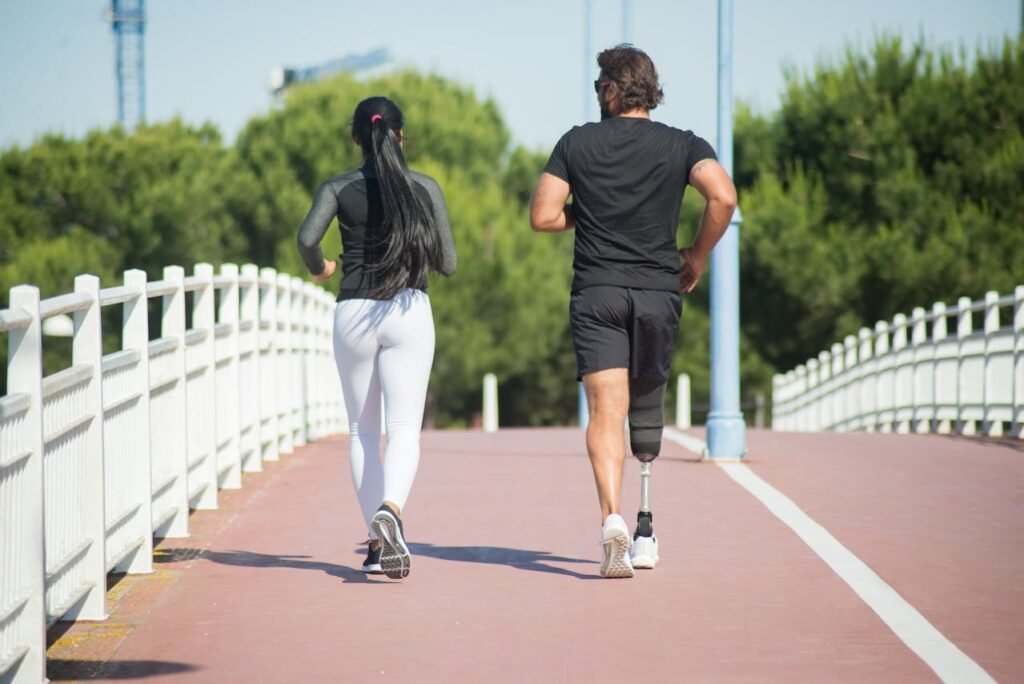
A single trial cannot reveal everything. Some issues only appear after longer use. That is why follow-up sessions are essential. They give us time to refine, adjust, and ensure comfort grows steadily.
What We Track in Follow-Ups
We look for changes in your skin, your muscle strength, and your confidence with the prosthetic. Each session adds another layer of improvement. This step-by-step method is what ensures lasting success.
Building a Long-Term Relationship
The journey does not end after the prosthetic is fitted. It continues for years, and so does our partnership. We see every follow-up not as a formality, but as a chance to stay connected, solve problems, and celebrate your progress.
Final Decisions After Trial Outcomes
Moving Toward the Final Fit
Once comfort, function, and confidence reach the right balance, we move toward the final prosthetic fit. This version is designed for daily wear, long-term strength, and your personal lifestyle.
Planning Training and Support
Even after the final fit, training continues. We make sure you are fully supported with exercises, guidance, and real-life practice so the prosthetic becomes a natural part of your world.
Celebrating Readiness
When you can use the prosthetic with trust, when your skin feels good, and when you smile with confidence—that is the moment we know you are ready. The next steps are no longer just technical, but about living your life fully again.
Conclusion
A trial fit is not a test of you—it is a test of the prosthetic. It is a safe space to discover, to adjust, and to build trust. Each outcome, whether positive or challenging, is a stepping stone toward a better final fit. The trial is where we listen, learn, and shape the prosthetic into something that feels like it belongs to you.
At RoboBionics, we never expect you to settle. We believe every person deserves a prosthetic that feels right, works right, and gives back independence with dignity. That is why we treat the trial fit as a partnership. We decide the next steps together—never for you, always with you.
Your journey does not end at the trial. It begins there. With each adjustment, each moment of progress, you move closer to a life where you can cook, work, write, hug, and live without hesitation.
If you are ready to take that first step, we invite you to experience a trial fit with us. Together, we will shape not just a prosthetic, but a future full of confidence and possibility.
Book your trial fit with RoboBionics today and let’s take the next step, side by side.



